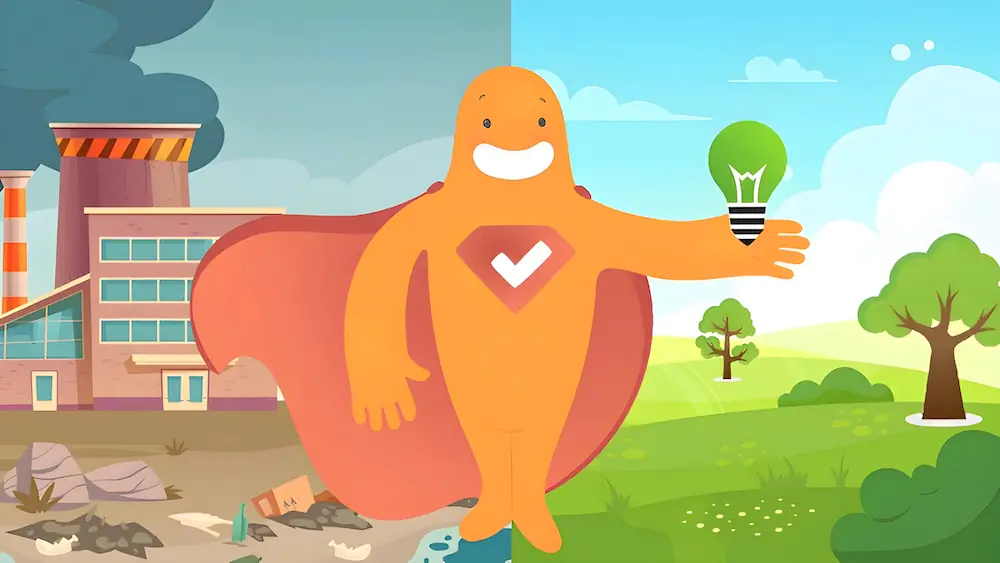Are you actively engaging with your customers? Today, nearly 55% of customers think companies need to transform how they engage, and almost 65% of customers expect tailored engagements that are based on past interactions. That’s not all: Customers who are fully engaged represent a 23% higher share in profitability, revenue, and relationship growth. In this blog, we’ll look at the importance of engagement, the stages of engagement, and how surveys can help improve customer engagement.
Create your customer engagement survey, poll, or questionnaire now!
The Importance of Customer Engagement
Having contact with your customers is critical for understanding what they want, when they want it, and where they want it. We love the way that Business2Community describes customer engagement:
The difference between a friend and an acquaintance is the regularity and depth of your communication. A friend is part of your day-to-day life. You speak often, and you’re familiar with each other’s lives. An acquaintance, on the other hand, is someone you might only encounter occasionally when your paths cross. In business, customers should be more like friends than acquaintances. This deeper relationship is created using customer engagement.
So, why is customer engagement important? Because it forms a healthy bond between you and your customers. It fosters trust and helps develop long-term loyalty. Studies show that people who are fully engaged with a brand spend 23% more over their lifetime than the average customer. They also buy 90% more frequently, spend 60% more per transaction, and are five times more likely to indicate brand loyalty. Engagement is also important when it comes to word of mouth. Word spreads quickly about customers’ experiences, so ensure that the only things going out on social media about your company are good things.
4 Stages of Customer Engagement
There are four stages of customer engagement, from awareness to advocacy. Here’s a deeper dive into the stages and how to improve customer engagement at each step.
First Experience
Companies, like people, don’t get a second chance when it comes to making a first impression. So, brands need to do everything possible to make sure the first experience is positive and memorable. When this is done properly, customers will move into the next stage of engagement.
Building the Relationship
The next stage is when a customer begins engaging with a company or brand for the second or third time. They are now familiar with the company, and the relationship is becoming more meaningful. For the company, now it’s time to try to learn more about the customer in order to better meet their needs. This can be accomplished with brief surveys (more on these later).
Loyalty
This third stage is when the customer is regularly engaging with the company. Using their products or services has essentially become a “habit.” At this stage, the company needs to continue to interact with the customer to ensure continued loyalty (after all, eventually the next “shiny new thing” will come along and you want to be sure the customer isn’t persuaded to use them instead).
Advocacy
This is the final stage, in which customers are so engaged with the company or brand that they actively promote it. They may tell friends and family about the product or service, or share their positive customer experiences on social media. When a company has converted a customer to advocacy, it’s important to offer rewards, such as special pricing. This will help keep the relationship moving forward positively.
5 Ways to Use Surveys to Improve Customer Engagement
Customer engagement is all about making the customer feel important, prioritized, and valued. One way to improve customer engagement is through surveys (this also helps keep you top of mind with consumers). Here are some ways to use surveys to improve customer engagement.
Market Research
What’s important to your customers? Conducting market research helps you uncover the answers. When creating a survey, simply ask. Are you selling clothing? Ask customers what styles interest them the most. Quick surveys that ask if a product is “hot or not” is a fun way to engage and get valuable input that can inform future product designs. Selling a healthcare product? Ask customers for their thoughts and attitudes on the healthcare systems or ask how they maintain a healthy lifestyle. All of these insights can help you to make improvements that will keep customers happy.
Content Generation
It’s important to have a social media presence, an email marketing strategy (for example, a newsletter), and a robust website (keeping it current with new information, such as a blog, will keep customers coming back). But, what if you don’t have any breaking news? You can use survey results to build news stories about customers’ attitudes toward your product or services. Smart content marketers know that using survey data to create original stories or reports can post public relations, get media attention, establish credibility, and increase brand awareness. This can also lead to other online publications sharing your story, or linking back to it (known as backlinks), which can improve your search ranking in Google.
Concept Testing
Considering producing a new product or adding a new service? Use surveys to get customer input and gauge interest before you go through the expense of creating it or offering it. Concept testing is also ideal if you’re thinking of changing a logo, brand name, or packaging, or producing a new ad campaign. Customer feedback will let you know if you’re on the right track or should reconsider the effort. Be sure to check out our blog, 7 Ways to Avoid Rebranding Mistakes, which includes – you guessed it – surveys.
Event Planning
If you’re planning a marketing event, surveys can make sure the event is tailored to your customers. You’ll want to engage with a survey before the event, during the events, and after the event.
- Pre-event: This survey is all about clarifying logistics (timing, travel, food restrictions, etc.) and asking attendees about their preferences (entertainment, speakers, content, etc.).
- During the event: Surveying attendees during the event keeps attendees engaged and captures their impressions about the experience on the spot (their memories could be hazier during the post-event survey). To capture their feedback, you could create a survey and use a kiosk or computer station in the event area or use a QR code that allows them to complete the survey on their phone. You could also integrate online polls into the event using polling apps, devices, and plugins that work with attendees’ mobile phones.
- Post-event: The post-event survey is designed to see just how enjoyable or informative attendees found the event. Along with an overall ranking, you’ll want to find out if they would attend another event in the future and if they’d recommend the event to others. Also, be sure to ask what they liked the most about the event and if there are things that could be improved.
Read more in our blog, How to Create an Event Planning Survey.
Capture Testimonials
92% of consumers trust peer recommendations over advertising and 84% of consumers trust reviews as much as their friends. So, use surveys with open-ended questions to collect testimonials that can be featured on your website and in other marketing materials. Best of all, authentic customer stories make for free advertising!
Conclusion
In 2020, customer experience overtook product and price as the most important differentiator to consumers. Of course, part of creating a good customer experience is by engaging with your consumers. Surveys offer an easy and relatively inexpensive way to engage with customers and begin providing improved experiences. Ready to start? SurveyLegend is here for you! Our surveys are beautifully rendered, highly secure, and responsive on any device – that’s why we’re trusted by some of the world’s largest brands! Start for free today with SurveyLegend.
Do you use surveys to grow customer engagement? What are some of your customer engagement strategies that we didn’t mention? We’d love to hear from you in the comments!
Create your customer engagement survey, poll, or questionnaire now!
Frequently Asked Questions (FAQs)
The ongoing cultivation of a relationship between the company and consumer that goes far beyond the transaction.
Customer engagement helps form a healthy bond between companies and customers, fostering trust and helping to develop long-term loyalty.
Surveys allow customers to give their opinions on your products or services. By giving them a voice, they will feel valuable.





